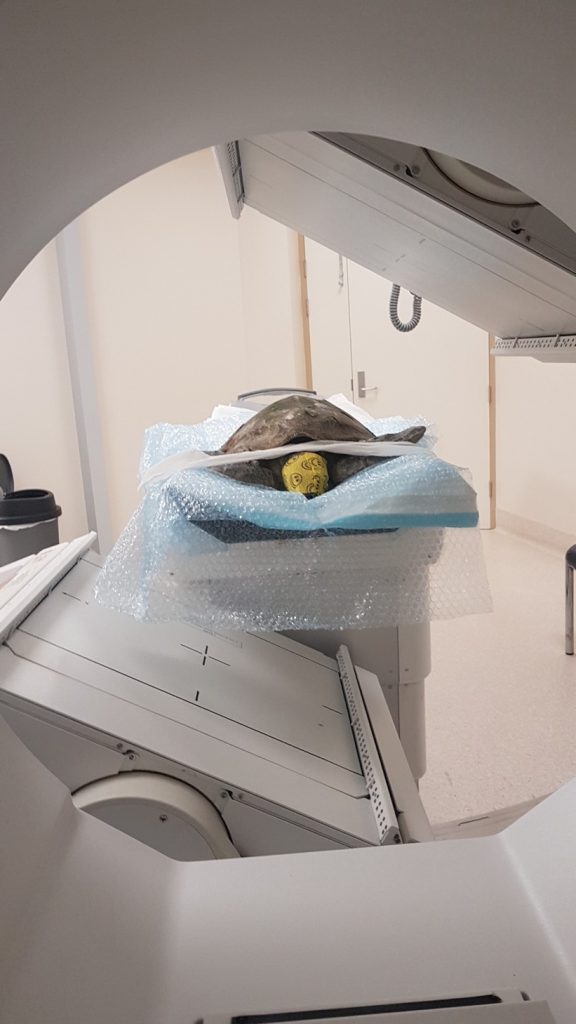A project update from PhD Candidate Sara Kophamel.
We finished data collection!
After several challenging field trips to the Great Barrier Reef and around Magnetic Island, we managed to examine enough turtles for our project. We have been testing a device called “Bioelectrical Impedance Analyser” (BIA) on over 150 juvenile green turtles to estimate body composition.
The BIA measures Impedance, which can be related to the amount of whole-body fat. Fat is a very good indicator of an individual’s fitness. However, the BIA has never been used on this species, so we had to validate it first. For doing so, we conducted computed tomography scans (CTs), which allowed us to non-invasively measure fat. CT scans help to easily identify fat, as fat has got a lower density than surrounding tissues, such as muscle or organs. Our preliminary data indicate that our validation process is promising, and in a next step we will link the findings from the CT scans to the BIA Impedance measurements.
With our approach, we hope to improve green turtle population assessments by providing a useful, accurate and portable device for measuring body composition.





